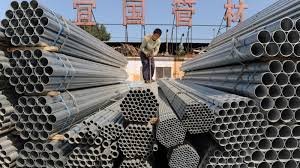Globaltraded.com — In the perspective of manufacturing and production strategy, the decision of where to establish production facilities can be as crucial as the products themselves. For companies planning to set up plants specializing in metal, food processing, and paper, for instance, the choice between California and Texas presents a complex matrix of considerations. Both states offer unique advantages and face distinct challenges, necessitating a thorough analysis to determine the optimal location for maximizing efficiency, cost-effectiveness, and long-term growth.
Economic Landscape and Incentives
Texas has long been heralded as a business-friendly state, boasting no corporate income tax and relatively low regulatory burdens. This environment fosters a robust economic climate conducive to manufacturing. The state’s Texas Enterprise Fund provides financial incentives to companies investing in local job creation and economic development, often tipping the scales in its favor.
California, on the other hand, while having a corporate tax rate that is among the highest in the nation, offers a dynamic market with significant economic incentives, particularly in green technology and innovation. The California Competes Tax Credit and the New Employment Credit are tailored to attract and retain businesses within the state. Furthermore, California’s commitment to sustainability can benefit manufacturers in the burgeoning green economy.
Labor Market and Workforce Quality
California is renowned for its highly skilled labor force, particularly in sectors such as technology and engineering. The presence of top-tier universities and research institutions ensures a steady pipeline of talent. For a metal-based manufacturing plant, this access to advanced engineering capabilities and technical expertise can be a significant advantage.
Texas also boasts a large, diverse labor pool, with a strong emphasis on vocational training and community college programs that align with industrial needs. The state’s emphasis on technical education and workforce development programs provides a solid foundation for food processing and paper manufacturing, where specialized skills are paramount.
Infrastructure and Logistics
Texas offers strategic logistical advantages with its extensive transportation network, including major highways, railroads, and ports. The Port of Houston, one of the largest in the United States, provides a critical gateway for international trade. This is particularly advantageous for a food processing plant, where efficient supply chain management and access to global markets are crucial.
California’s infrastructure, while robust, faces significant challenges, including traffic congestion and aging facilities. However, its ports, such as Los Angeles and Long Beach, are pivotal to international trade, especially with Asia. This can be a boon for a paper manufacturing plant aiming to export products overseas. Additionally, California’s commitment to upgrading its infrastructure through various initiatives offers potential long-term benefits.
Energy Costs and Sustainability
Energy costs are a critical consideration for manufacturing plants, particularly those with high energy demands like metal production. Texas, with its abundant natural resources, offers some of the lowest energy costs in the country. The state’s energy infrastructure is designed to support industrial activities, making it an attractive option for energy-intensive manufacturing.
California’s energy landscape is characterized by higher costs, partly due to its stringent environmental regulations. However, the state’s focus on renewable energy and sustainability initiatives can align well with companies prioritizing green manufacturing. For a food processing plant with a commitment to sustainable practices, California’s renewable energy programs and incentives could provide a strategic advantage.
Regulatory Environment
Texas is often perceived as having a more lenient regulatory environment, which can facilitate quicker project approvals and lower compliance costs. This can be particularly beneficial for manufacturers looking to expedite their setup and operational timelines.
California’s regulatory environment is more complex and rigorous, particularly concerning environmental and labor laws. While this can increase compliance costs and administrative burdens, it also ensures higher standards of environmental stewardship and worker protection. For companies with a strong emphasis on corporate social responsibility, this alignment with ethical practices can enhance brand reputation and consumer trust.
Market Proximity and Access
California’s large and diverse consumer base provides immediate access to a vast market, particularly for food processing plants aiming to cater to health-conscious and environmentally aware consumers. The state’s multicultural population also offers a unique opportunity to tailor products to diverse demographic preferences.
Texas, while having a smaller population, is one of the fastest-growing states in the nation. Its central location within the United States facilitates easy access to both domestic and international markets. For a paper manufacturing plant, Texas’s proximity to the timber resources of the southern United States can significantly reduce raw material transportation costs.
The decision between California and Texas for establishing manufacturing plants in metal, food processing, and paper manufacturing hinges on a balance of economic incentives, labor market quality, infrastructure, energy costs, regulatory environment, and market access.
California offers a highly skilled workforce, significant economic incentives, and proximity to a large consumer base, making it an attractive option for food processing plants. Its commitment to sustainability and innovation aligns well with companies aiming to lead in green manufacturing practices.
Texas, with its business-friendly policies, lower energy costs, and strategic logistical advantages, presents a compelling case for metal and paper manufacturing plants. The state’s extensive transportation network and central location provide efficient access to both domestic and international markets.
Ultimately, the choice will depend on the specific strategic priorities and operational requirements of the company. Both states offer unique advantages that can support the growth and success of manufacturing enterprises, ensuring that each plant can thrive in a competitive global market. (Globaltrade.com)
Read More:
- Top 10 World’s Most Powerful Commodity Traders That Rule the Markets
- Top 100 Japanese Export Giants: Your Next Global Business Partners
- Global Audit Giants: The Top 10 Firms and Their Winning Strategies
- Global Market Entry Strategies: How U.S. Businesses Can Expand Internationally
- Behaestex Group: The Indonesian Sarong Giant Making Waves in Global Markets



























































